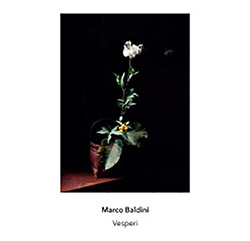
Influenced by the seemingly contradictory sources of 16th century Italian composers and their polyphonic compositions, Eliane Radigue, and North Indian classical, Italian composer Marco Baldini's beautifully dark works employ a slow, rarefied pace and subdued dynamics with a fascination for pianissimo playing, heard in eight chamber compositions for low strings and marimba.
Out of Stock
Quantity in Basket: None
Log In to use our Wish List
Shipping Weight: 3.00 units
Sample The Album:
Marco Baldini-composer
Niccolo Curradi-cello
Michele Lanzini-cello
Maurizio Costantini-double bass
Amedeo Verniani-double bass
Francesco Toninelli-marimba
Luisa Santacesaria-conductor
Click an artist name above to see in-stock items for that artist.
Label: Another Timbre
Catalog ID: at205
Squidco Product Code: 33017
Format: CD
Condition: New
Released: 2023
Country: UK
Packaging: Cardboard Gatefold
Tracks 1, 3, 6 and 7 recorded at Chiesa di Santo Stefano a Paterno, in Firenze, Italy, in July, 2022, by Francesco Toninelli.
Another Timbre Interview with Marco Baldini
Tell us about your background, and how you came to contemporary music.
My history as a musician coincides and largely depends on my history as a music listener.
I was born and raised in a small town in the countryside near Florence. Since I was a child, my parents took my brother and me to learn music at my village band school, where my mother, an amateur clarinettist, played and still plays.
I came to contemporary music through jazz: my brother Lorenzo, who is five years older than me and is a very good alto saxophonist, had many records, and I immediately fell in love with a record by the Art Ensemble of Chicago and compulsively started listening to free jazz, only later getting into "more traditional" jazz. Later I discovered the world of radical European improvisation, the new reductionist trends, and began to improvise following that idiom. At the same time, I began to take an interest in contemporary classical music, becoming an increasingly avid listener. Over time I shifted to having less and less interest in free improvisation and more in the composed form. This paradigm shift in my aesthetics coincided with the change in the ensemble Blutwurst, which I founded with Daniela Fantechi and Edoardo Ricci in 2011. We started the ensemble with the idea of doing a certain kind of chamber improvisation, but since 2014 we stopped improvising and started performing only written compositions.
I started composing in this period mainly within Blutwurst, where I shared the compositional process with Daniela, who unlike me, is an academically trained composer. I only started composing in a systematic way in the last few years. With the 2020 lockdown I had time to devote myself more consistently to composition, developing much more formal writing.
Apart from my musical life, which has always taken place outside the academy, I studied Roman archaeology at university, specialising in the iconography of early Christian sarcophagi. For a living I work as a public librarian in Impruneta, a lovely village in the hills surrounding Florence.
What do you think it was that caused you to move away from free improvisation?
It was a gradual process that happened first as a listener and then as a musician.
I was always fond of small improvisational ensembles, and I remember very well the surprise and excitement when I listened to the second record of the Phosphor septet. But after a few years I began to feel less and less interest in the genre, and the things I began to like the most were not ascribable to free improvisation. I think of some records from this very label that accompanied me in this change of taste, Ist gefallen in den Schnee by Magnus Granberg, Catherine Lamb's Three Bodies Moving, and Antoine Beuger's Cantor Quartets played by Jürg Frey, Radu Malfatti, Sarah Hughes and Dominic Lash. Records in which I found the timbral approach I loved in improvisation combined with an attention to form and the development of the narrative in a calibrated manner.
Accordingly I changed as a musician. When improvising, it is easy to be in contexts where musically things don't work out. But as moments of amazement at unexpected sounds became fewer, and the moments of frustration increased, I began to have doubts.
I had the opportunity to learn free improvisation by playing with great musicians, such as Eugenio Sanna, Edoardo Ricci, Stefano Bartolini, the Burp collective and many others. I owe a great debt of gratitude to all of them. I have always liked, even in improvisation, music with a slow, rarefied pace and subdued dynamics. I developed part of my language as a trumpeter by improvising, so I'm still connected to that world. Aside from Bill Dixon, who has been an indispensable reference for me for years in terms of trumpet playing, I was very much influenced by Birgit Ulher and Axel Dorner: today I hardly make use of the extended techniques developed in that period, but I think the focus on timbral layering and pianissimo playing is partly a legacy of that experience.
Some of the pieces on Vesperi are based on works by 16th century Italian composers. How and why did you borrow material from early music in this way?
Early European music has, along with certain contemporary music and North Indian classical music, strongly influenced my musical thinking in recent years. I have always felt an intimate correspondence with the sound, harmony, and melodies of early music and especially Renaissance and Early Baroque music.
In general, I find that Renaissance polyphony has a very profound evocative quality: it succeeds in a sober way in visualizing a plethora of colours, sensations, and even natural events in an abstract but at the same time direct way, as when observing a landscape. It was a time full of events and revolutions in music: great theoretical disquisitions, the emergence of whole classes of instruments later forgotten, different temperaments and intonations, greater freedom of performance and expression.
I have found that by simplifying and slowing down a polyphonic composition, unexpected details are often revealed, and harmonic solutions previously hidden by the speed of the performance emerge. It is a type of compositional work that we also used with Blutwurst in 2015 for a project on Carlo Gesualdo da Venosa, where we had selected some particularly harmonically bold parts from Tenebrae facte sunt from the Responsories for Holy Week, by dilating them exponentially (Gesualdo is the most "contemporary" among madrigalists, or at least the one who pushes the use of dissonances to extremes).
So, for me it came quite naturally to compose music using some of the polyphonic compositions of the 16th and early 17th centuries that I love. I developed a quite standardised way of doing it: I expunge the harmonic skeleton of the composition, eliminating elements that are too connotative, such as cadences or embellishments, and often make some changes in the polyphonic texture to enhance certain phrases or achieve certain acoustic effects. I work with long durational forms, and so everything undergoes a process of dilation.
It may sound strange but in this process I was influenced by two pieces by Eliane Radigue: Etude and Maquette from Opus 17 (1970). I will premise that this is a purely mental association: in these two pieces Radigue uses an excerpt of Chopin's Prelude n. 17 op. 28 and one from Wagner's Parsifal, respectively. The two loops are subjected to a continuous process of playback and recording, in the manner of Alvin Lucier's I am sitting in a room. The edition of Opus 17 features liner notes by Emmanuel Holterbach - to whom we owe the rediscovery of Opus 17's tapes in the French composer's private archive - mentioning that Radigue calls this technique "érosion magnétique". This process gradually leads the two musical excerpts to dissolve and collapse so that, in the end, they are completely transfigured while keeping a shadow, a reflection of the source of departure.
The other pieces (the original compositions) share a similar mood to the pieces based on early music - slow moving, formal, foreboding. Is that an aesthetic that you feel that you share with some early composers, or are you changing the mood of the early works to fit your own aesthetic?
Certainly, there are some aesthetic elements that I love and try to absorb from some Reinassance/early Baroque composers, such as Carlo Gesualdo, Byrd, Dufay, Marenzio, Palestrina, Monteverdi, as well as less known composers, like Corteccia and Animuccia.
When I start composing from pre-existing material I try to dwell on and 'stress' the characteristics that match my musical idea more closely. I prefer slow pieces with simple structures: these characteristics are often found in sacred music works, but not only. For example, "Corteccia" is a piece based on some excerpts of Francesco Corteccia's compositions taken from the Responsori per la Settimana Santa (1527): I hope a reflection of the sober drama emanating from the original fragments is preserved in my piece. On the other hand, "Volta" and "Animuccia" come from secular works by Luca Marenzio and Giovanni Animuccia and have a more pastoral and contemplative dimension.
In pieces that are totally original and not based on pre-existing material, such as "Trio" and "Quartetto", the idea of the Early Music universe is nevertheless present, but it is precisely an 'idea', an abstract influence, a sound image I have of that music. Malkosh deserves a separate mention. It's based on the Raga Malkauns ("Malkosh" is just another name for this raga), a nocturnal pentatonic raga. When I composed this piece, I adhered strictly to the rules that dominate this raga. I had originally conceived and written it for theorbo and bordone, but then adapted it for pizzicato double bass. It's a piece that formally has nothing to do with early European music, and I am delighted that it turns out to be 'in line' with the mood of the other pieces.
Where did your interest in Indian music come from, and how did you come across it?
It started a few years ago, I think in 2018. I was already listening to some North Indian music, which I appreciated, but the interest remained at the listener level similar to the one I had in other extra-European classical music, like, for example, Gagaku. The spark started after I came across Hussein Sayeeduddin Dagar's record Chant Dhrupad À Vézelay, where there are incredible versions of Raga Bhupali, Chandrakauns and Jogya. The extraordinary quality of the music, and the modesty of the great master, immediately made me want to delve into that incredible musical tradition. I then began to study North Indian music theory, particularly Dhrupad, with Gianni Ricchizzi, a sitar, vichitra veena and rudra veena player, and among Europeans, with Amelia Cuni, one of the masters of the genre. Then in Jaipur I got to know Sayeeduddin Dagar's sons, Nafeesuddin and Aneesuddin, with whom I am always in touch, and who have helped me to understand Dhrupad tradition better. Today I continue to study Dhrupad with Gianni and Khyal with the young master Supriyo Dutta, who visits Italy often.
Even though I am an absolute beginner the study of the music of North India, which has a tradition as ancient and rich as Western classical music, has opened up a new world for me musically and aesthetically, and most of all it has opened up my ears: I find that I hear all music differently since I began to immerse myself in listening to and studying this music.
You said earlier that you work as a librarian. Would you rather earn your living from music, or do you see advantages in keeping your interest in music separate from, firstly, your formal education, and , secondly, from the business of surviving?
I am quite an anxious person and for a long time I didn't contemplate the idea of being a musician as a profession even though I studied music from an early age. Music has always been my passion but at the time of choosing my academic field of study, I preferred the historical field, which has always been my other interest, because I felt the idea of making a living as a trumpeter was impractical: I didn't think I could handle the emotional stress related to performances, especially solo performances. Today I would probably make a different choice, but I am in no way regretful: I really loved my studies in archaeology that gave me a forma mentis in research which I realise that I still apply to my musical studies. The only problem is that in Italy - it may sound strange, but it is so - working as an archaeologist is practically impossible (one of my closest friends to work in the field had to move to England). Working as a librarian seemed like a good compromise given my background and it's a job I really enjoy. Of course, I would like to have more time to devote to music and composition. I compose mostly at night and that's one of the reasons for the album title: these are all pieces I worked on after dark!

The Squid's Ear!
Artist Biographies
• Show Bio for Marco Baldini "Marco Baldini (Florence, 1986) graduated in Roman Archeology at the Università degli Studi di Firenze. He studied music and trumpet with Tolmino Marianini, Luca Marianini and with Donato De Sena, at the Scuola di Musica di Fiesole. He attended workshops with Axel Dörner, Birgit Ulher, Roswell Rudd and Mario Bertoncini. In 2011 he founded Blutwurst with Daniela Fantechi and Edoardo Ricci. Since 2015 he has been collaborating with Tempo Reale on several projects as redactor for musicaelettronica.it and as curator for the series of concerts TRK. He collaborated also with London based artist Alessandra Ferrini for the soundtracks of her essay movies Negotiating Amnesia (2015) and Radio Ghetto Relay (2016)." ^ Hide Bio for Marco Baldini • Show Bio for Niccolo Curradi Niccolò Curradi is a cellist, actor, singer and musician based in London, England. ^ Hide Bio for Niccolo Curradi • Show Bio for Michele Lanzini "Michele Lanzini: Graduated in Cello at Conservatorio "L. Cherubini" of Florence with M° Andrea Nannoni, in 2009/2010 also attends a String Quartet annual Masterclass at Scuola di Musica di Fiesole and then orchestrally formed at the "Academy of Maggio Musicale Fiorentino" (2006/2007) and at "Italian Youth Orchestra Academy" (2008/2009). Since 2011 joins the ensemble "Blutwurst". Beside concerts activity he has being teaching cello in many Tuscan music schools including at "Scuola di Musica di Fiesole". In 2015 attends a Master in Music operator for Orchestras and Children's and Youth Choirs at the Department of Faculty of Education and Psychology, University of Florence. He is currently Cello professor at High Music School "L.Bianciardi" of Grosseto." ^ Hide Bio for Michele Lanzini • Show Bio for Maurizio Costantini Maurizio Costantini is an Italian double bassist, know for the bands Alea Ensemble, Dieci Ensemble, Tre Corde, and Blutwurst. ^ Hide Bio for Maurizio Costantini • Show Bio for Amedeo Verniani "Amedeo Verniani is a young talented italian double bass player and composer known in the italian jazz and classical music scene." ^ Hide Bio for Amedeo Verniani • Show Bio for Francesco Toninelli "Francesco Toninelli is a performer and composer from Florence, Italy. His music is created with a special attention to the semantic use of recorded sounds, developing a research largely based within the relationship with the past and hypothesis for new narrations and articulations of obsolete aesthetics, weaving connections to baroque art, mythology, rurality. The result is crystalized in bizzare layerings refering as much to a toccata as to videogame sound design." ^ Hide Bio for Francesco Toninelli • Show Bio for Luisa Santacesaria Luisa Santacesaria is an Italian harmonium player, known for the bands Tomaga, Blutwurst, and Calibro 35. ^ Hide Bio for Luisa Santacesaria
11/20/2024
Have a better biography or biography source? Please Contact Us so that we can update this biography.
11/20/2024
Have a better biography or biography source? Please Contact Us so that we can update this biography.
11/20/2024
Have a better biography or biography source? Please Contact Us so that we can update this biography.
11/20/2024
Have a better biography or biography source? Please Contact Us so that we can update this biography.
11/20/2024
Have a better biography or biography source? Please Contact Us so that we can update this biography.
11/20/2024
Have a better biography or biography source? Please Contact Us so that we can update this biography.
11/20/2024
Have a better biography or biography source? Please Contact Us so that we can update this biography.
Track Listing:
1. Bordone 04:02
2. Trio 17:41
3. Corteccia 05:31
4. Malkosh 10:45
5. Volta 05:57
6. Quartetto 10:24
7. Animuccia 03:43
8. Bicinium 07:40
Compositional Forms
Chamber Rock
Stringed Instruments
Percussion & Drums
European Improvisation, Composition and Experimental Forms
Sextet Recordings
Staff Picks & Recommended Items
New in Compositional Music
Search for other titles on the label:
Another Timbre.

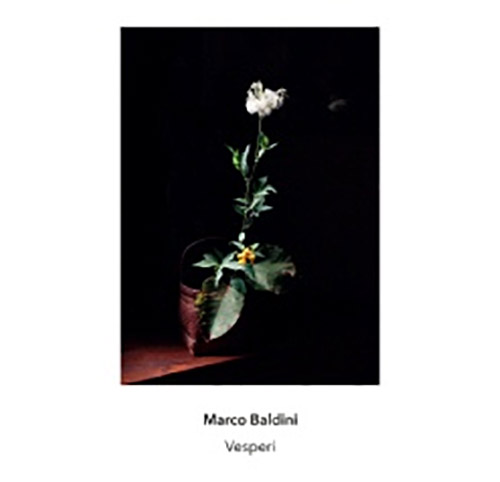





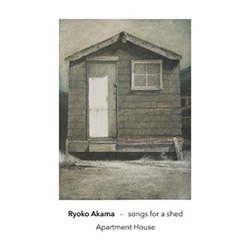



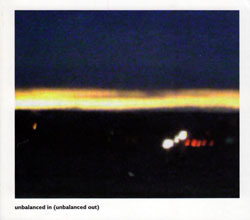



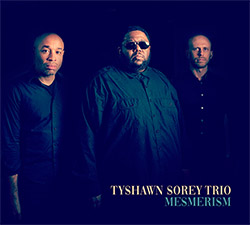
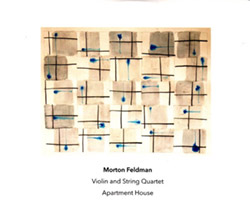
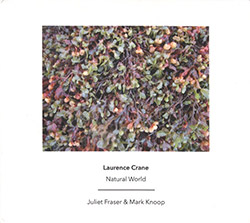
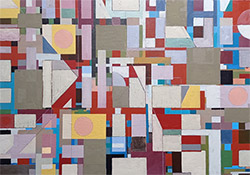
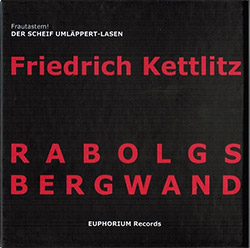
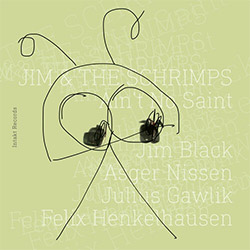
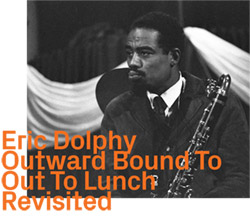
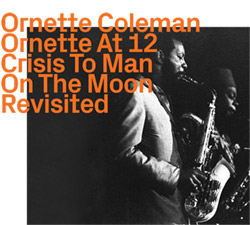

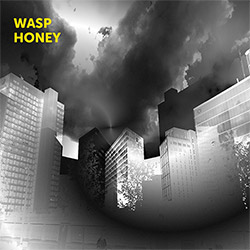





![Guy, Barry / Ken Vandermark: Occasional Poems [2 CDs]](https://www.teuthida.com/productImages/misc4/34849.jpg)
![Novoa / Carter / Mela Trio: Vol.1 [VINYL]](https://www.teuthida.com/productImages/misc4/35236.jpg)


![Elephant9 : Mythical River [VINYL]](https://www.teuthida.com/productImages/misc4/34624.jpg)
![Evans, Peter (Evans / Eldh / Black): Extra [VINYL]](https://www.teuthida.com/productImages/misc4/35279.jpg)

![McPhee, Joe: Straight Up, Without Wings [BOOK]](https://www.teuthida.com/productImages/misc4/35454.jpg)
![Jeck, Philip: rpm [2 CDs]](https://www.teuthida.com/productImages/misc4/35455.jpg)













![Barker / Parker / Irabagon: Bakunawa [VINYL]](https://www.teuthida.com/productImages/misc4/35533.jpg)
![Blaser, Samuel / Marc Ducret / Peter Bruun: Dark Was The Night, Cold Was The Ground [VINYL 10-inch]](https://www.teuthida.com/productImages/misc4/35492.jpg)








![Warren, Kenny (Warren / Hoffman / Ellman): Sweet World [VINYL]](https://www.teuthida.com/productImages/misc4/35451.jpg)




![Blake, Ran / Dave Knife Fabris: Live Amsterdam 2006, First Visit [CD + POSTCARDS]](https://www.teuthida.com/productImages/misc4/35275.jpg)













![DNS: Taking Big Bites Of The Khandas Three Cafes Deep [2 CDs]](https://www.teuthida.com/productImages/misc4/35334.jpg)




![Cleaver, Gerald: The Process [VINYL]](https://www.teuthida.com/productImages/misc4/34966.jpg)




![Alva Noto: HYbr:ID II [VINYL 2 LPs]](https://www.teuthida.com/productImages/misc4/35201.jpg)

![Baron, Derek / Luke Martin: Distinct and Concealed [CASSETTE + DOWNLOAD]](https://www.teuthida.com/productImages/misc4/35079.jpg)

![Lyle, Erica Dawn : Colonial Motels [CASSETTE + DOWNLOAD]](https://www.teuthida.com/productImages/misc4/35080.jpg)









![Sanna, Claudio: Compositori Sardi Contemporanei II [2 CDs]](https://www.teuthida.com/productImages/misc4/35317.jpg)







![Zurria, Manuel: Fame di Vento [3 CDs]](https://www.teuthida.com/productImages/misc4/35167.jpg)

![Granberg, Magnus / Nattens Inbrott / Skogen: Holde Traume, Kehret Wieder! [2 CDs]](https://www.teuthida.com/productImages/misc4/35038.jpg)
![Frey, Jurg: Outermost Melodie [2 CDs]](https://www.teuthida.com/productImages/misc4/35039.jpg)

![Pavone, Jessica: Reverse Bloom [VINYL]](https://www.teuthida.com/productImages/misc4/34895.jpg)




![Modney (Modney / Wooley / Gentile / Roberts / Pluta / Symthe / ...): Ascending Primes [2 CDs]](https://www.teuthida.com/productImages/misc4/34852.jpg)









![Elephant9 with Terje Rypdal: Catching Fire [VINYL 2 LPs]](https://www.teuthida.com/productImages/misc4/35355.jpg)
![Deerlady (Obomsawin, Mali / Magdalena Abrego): Greatest Hits [VINYL]](https://www.teuthida.com/productImages/misc4/34876.jpg)




![Haino, Keiji: Black Blues [2 CDs]](https://www.teuthida.com/productImages/misc4/35109.jpg)



![Surplus 1980: Illusion of Consistency [CD]](https://www.teuthida.com/productImages/misc4/35069.jpg)
![Staiano, Moe: Away Towards the Light [VINYL + DOWNLOAD]](https://www.teuthida.com/productImages/misc4/35037.jpg)



![Caveira (Gomes / Sousa / Abras / Ferrandini): Ficar Vivo [VINYL]](https://www.teuthida.com/productImages/misc4/34643.jpg)
![Gregg, J. J. / David Van Auken: Lunar Prairie [CD w/ DOWNLOAD]](https://www.teuthida.com/productImages/misc4/34611.jpg)

![Coultrain: Mundus [VINYL]](https://www.teuthida.com/productImages/misc4/32439.jpg)
![Mattin: Songbook #6 [VINYL]](https://www.teuthida.com/productImages/misc4/27317.jpg)
![Punkappella: Wake Up [7-inch VINYL]](https://www.teuthida.com/productImages/misc4/17519.jpg)
![Residents, The: WARNING: UNiNC.: Live And Experimental Recordings 1971-1972 [VINYL 2 LPs]](https://www.teuthida.com/productImages/misc4/31521.jpg)
![Coultrain: Phantasmagoria [VINYL]](https://www.teuthida.com/productImages/misc4/30142.jpg)
![Lennon, Sean Ono: Asterisms [VINYL]](https://www.teuthida.com/productImages/misc4/34517.jpg)

![Coley, Byron: Dating Tips for Touring Bands [VINYL]](https://www.teuthida.com/productImages/misc4/17906.jpg)

![Lost Kisses: My Life is Sad & Funny [DVD]](https://www.teuthida.com/productImages/misc4/lostKissesDVD.jpg)